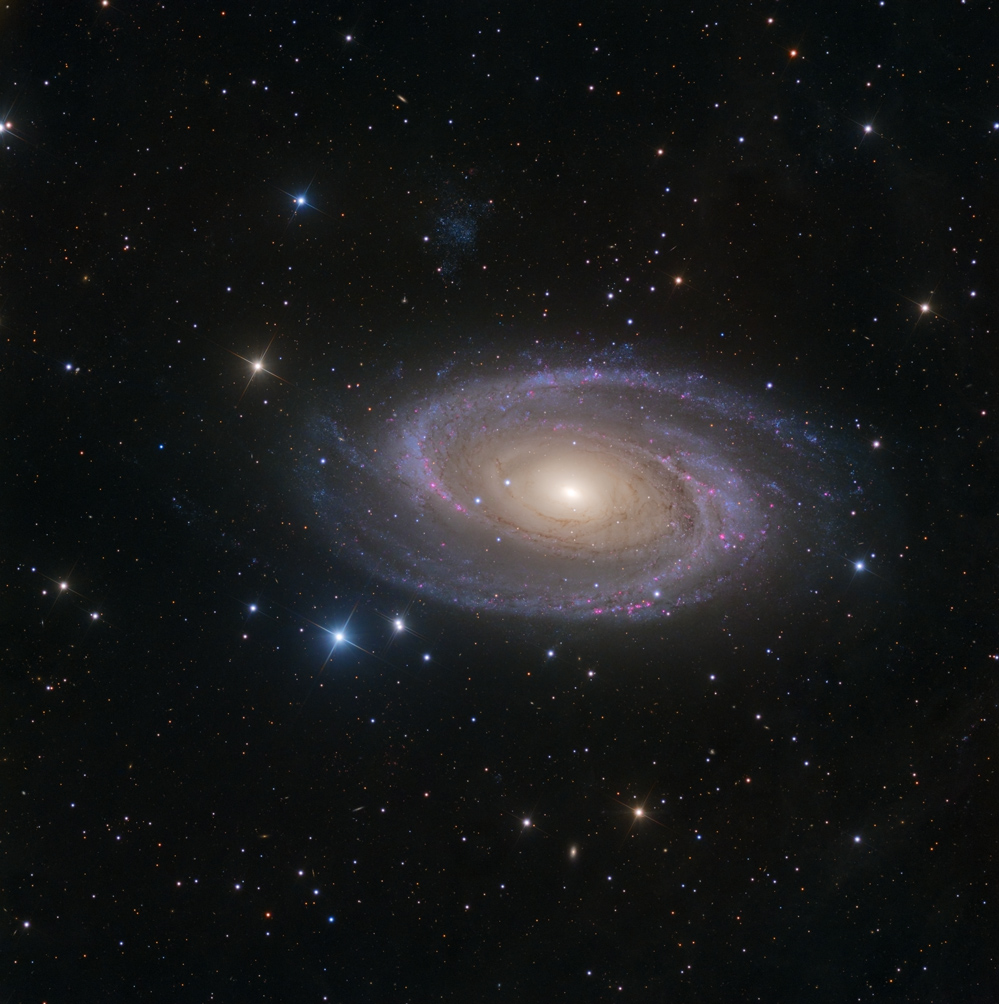
M81 is an iconic 7th magnitude (that's pretty bright) galaxy in Ursa Major (the constellation that contains the Big Dipper), relatively close to us at approximately
twelve million light years from Earth. It is a prominent grand design spiral galaxy, with about 250 billion stars
(slightly fewer than our Milky Way is thought to have). It has a diameter of approximately 90,000 light years (quite a bit less than our Milky Way). The field of this photograph is
about the angular size of a full moon.
Many galaxies have a super-massive black hole in their center; M81 has an unusually large one--a supermassive black hole with a mass of about 70 million times that of our sun. By comparison, our
Milky Way galaxy, significantly larger than M81, has a supermassive black hole at its core with a mass of about 4 million times that of our sun.
The background is not as dark as I would have expected; some of that dust is in our own galaxy, and some probably is tidal debris from M81's close encounters with its galactic neighbors.
There are many other galaxies in this image, most priminently the dwarf galaxy that is a companion of M81, Holmberg IX (just above M81, to the left of center).
Unusually for a galaxy photo, I have presented two versions of this galaxy--a color version and a grayscale version. I find the structure more evident in the grayscale version, so I thought it worth sharing.
Click on the image to toggle between the color image and the grayscale image.
Copyright 2020 Mark de Regt